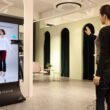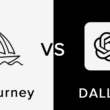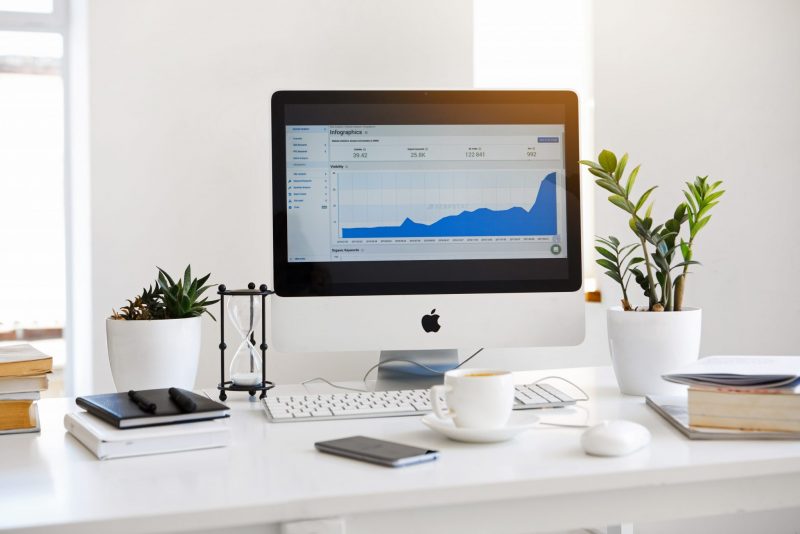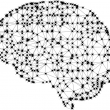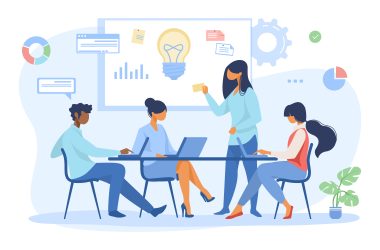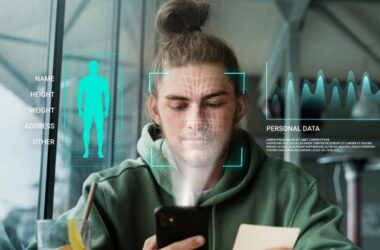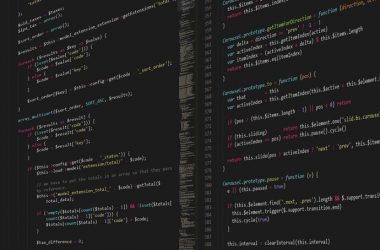Effective utilisation of big data and predictive analytics has become critical in today’s data-driven world for businesses to achieve their goals. In conjunction with machine learning and artificial intelligence, we have many real-world predictive analytics applications. Governments, research and academic institutions and commercial businesses can all use predictive analytics to make informed and decisions that take into consideration historical data trends. Here in this article, we discuss how predictive analytics works and some of the most common predictive analytics examples that exist today.
What Is Predictive Analytics?
Predictive Analytics is the systematic process of using historical data (last month, last year) to establish connections and analyse possible patterns within the data. These relationships and trends, when used on current or future data (tomorrow, next month, next year), can help predict future outcomes.
The Artificial Intelligence (AI) uses a combination of machine learning applications and statistical techniques to determine the presence and magnitude of changes in one element caused by changes in another within the same data set. After establishing this causality, the AI can apply the same models to new data sets and predict whether there is a change in the second element. For example, you can use historical marketing and sales data to see how significantly specific marketing techniques impact sales.
Why Is Predictive Analytics the Talk of the Town?
In fairness, predictive analytics is nothing new. However, it used to be available only to companies that could afford the resources necessary to carry it out. Only recently has the use of predictive analytics become affordable, easy to use and therefore, popular. It is used increasingly by different organisations in various industries to improve efficiency in everyday operations and achieve that elusive competitive edge.
Send Marketing Material to Customers That Are Most Likely to Make a Purchase
Developing a marketing campaign is both a labour and capital intensive task. Successful marketing needs to be pertinent and engaging at all levels in your target audience. Therefore, you need precisely who is most likely to buy your product and what are the commonalities between such individuals (or groups). For example, let us say that your business has a $5,000 budget for a marketing campaign, and you have 100,000 customers. In this case, you clearly cannot give them all a 10% discount. Business intelligence, coupled with predictive analytics, can help forecast the customers that exhibit the most significant probability of buying your product. You can then focus your discounts/coupon books to only those that generate the most revenue.
Identify Customers that May Abandon a Service or Product
Consider, for example, a Gym that has implemented a predictive analytics model. Keep in mind that fitness centres usually have a high attrition rate with many customers dropping the subscription reasonably quickly. In this case, let us assume that ‘Jack’ is one such customer that the system identified will not continue the subscription. The basis of judgement is historical data gathered from the Gym as well as the data available about Jack. The next time that Jack comes into the Gym, the staff will be prepared to offer incentives and discuss the continuation of the relationship between the Gym and Jack.
A prominent predictive analysis example comes in the form of Folio3. It is a company that has developed a solution specifically designed for this problem. Their Customer Churn Prediction system offers advances customer segmentation, predictive attrition, statistical analysis and customer retention strategies tailored to the potential churners.
Increase customer service quality through precise planning
Knowing when customers are most likely to arrive and what they will need is the ideal situation. You can use this information to improve service quality and the overall efficiency of your organisation. Through predictive analytics, businesses can forecast demand better by using advanced models and business intelligence. Consider a hotel chain, for example, that wants to know the number of customers that are most likely to visit and stay at specific locations during the Halloween weekend. The hotel can then ensure that they have enough resources and the staff necessary to cater to the flow of customers.
Similarly, a fast-food chain can use predictive analytics to improve drive-thrus and reduce customer wait times. Folio3 successfully developed one such system for its client. Their Automated Authentication fro Drive-Thrus. ‘Dashcode’, the company that wanted the automated system wished to increase the workflow efficiency in Drive-Thrus by breaking down each activity and applying deep learning. In doing so, the system would be able to predict what customers are likely to order and recommend it first to save on order time.
Best Predictive Analytics Examples
No sector is precisely the same and therefore is likely to use predictive analytics in different ways. Here are the top seven industry predictive analytics examples.
1) Sports
One of the most recent additions to predictive analytics in sports is the Microsoft Sports Performance Platform. It is a tool that comes up with data-driven decisions for athletes and teams for almost any aspect of the game, including everything from training schemes for each player to the final composition of the team. The algorithms even help prevent injuries and also predict the total recovery time by taking into account factors such as distance sprinted and temperature.
A small Danish football club, FC Midtjylland is an excellent predictive analysis example. It now analyses each player twice a month and tailors individual training plans for every player. Analytical models are used to gain insights during the game to make changes to the game plan in half-time and also to suggest new players.
In tennis, IBM introduced a tool named ‘SlamTracker’ which predicts the winner of a match based on a player’s pattern of play, the propensity of forehand use and willingness to volley. Coupled with computer vision and live game footage, this data can then predict the winner.
2) Retail
Retail is probably one of the most significant predictive analytics examples. Retailers are always in a search for ways to increase customer engagement, loyalty and retention. One such example is Amazon’s recommendations system. Whenever you make a purchase, the company offers a list of other similar items to the one you just bought. The AI supplies this list based on historical data of other customers that have been buying the same products.
There are many other benefits of predictive analytics in retail, including sales forecasts, market analysis, segmentation and managing inventory. You can also derive revisions to the business models and the best retail locations using predictive analysis. However, it also acts post-sale, acting to reduce returns, get the customer to come back and extend warranty sales.
3) Weather
Predictive analytics has become almost indispensable to weather forecasting today. Five-day forecast is now just as accurate as one-day forecasts from the 1980s. We can now accurately predict the occurrence of and movement of large weather systems including hurricanes, tornados and flood based on historical data. For example, recently, an extreme polar vortex brought frigid winds down to places like Wisconsin and Minnesota and dropped temperatures to -50 degrees Fahrenheit. The prediction arrived several days in advance, giving people time to prepare. All of this is possible thanks to satellite monitoring of the Earth and complete predictive models that represent how the Earth functions. The movie “Day after Tomorrow” is an excellent example of the use of predictive analytics in assessing the risk of global weather patterns.
4) Health
Predictive analytics in the health care sector is focused primarily on how likely is it that an individual will get better, or sicker. By analysing historical data, hospitals can predict which patients are likely to contract a chronic disease and are susceptible to Central-Line Associated Bloodstream (CLAB) infections. This cognitive services process can also help determine the risk of a patient that does not show up for scheduled appointments. Health Catalyst is one such company operating in Salt Lake City since 2008 that specialises in the focus areas mentioned above.
5) Insurance and Risk Assessment
Insurance firms managed to bring losses within risk tolerances levels despite recent financial disasters thanks to predictive analytics. The system ensures that firms set up competitive prices for underwriting, identify fraudulent claims, analyse and estimate future losses. Insurance firms can also use predictive analysis to develop marketing campaigns and generate better insights into risk selection and assessment.
6) Financial modelling
Predictive analytics for financial services helps fine-tune the overall business strategy, revenue generation strategy and resource optimisation. Automation of analytics in financial services enables firms to process thousands of models simultaneously and deliver quicker results than with traditional modelling based on manual human interpretation of the data. Human error can severely affect the process of analysing trends.
The predictive analysis systems can help financial institutions target specific customer segments based on profitability and risk level. By using historical data, the company can also forecast cash flows and predict demand patterns for specific financial services. Most importantly, the algorithms can alert the firm to customers that deviate from past payment patterns and therefore collect overdue payments much faster.
7) Energy
In the power generation sector, component failures are a real risk and can sometimes cause catastrophic results. The Chernobyl disaster is one such example. By using predictive analytics in power plants, the company can anticipate equipment failures and reduce sudden shutdowns. By predicting when a component will fail, the power plant can use preventive maintenance to address the issue in time and thus reduce maintenance costs and improve the availability of power.
Similarly, utility companies can predict when customers might get a high bill and then alert customers to spikes that occur at certain times of the day. Thereby, the power company can manage the load better and reduce customer complaints.
Predictive Analytics Vs Predictive Modelling
Predictive analytics and modelling serve the same purpose but differ in the method used. Both systems use historical data and statistical techniques to predict the occurrence of an unknown future event. Predictive modelling examples can be found most commonly in astrology and meteorology.
However, predictive modelling will only give you a probability based on a predetermined modelling framework. On the other hand, predictive analytics uses modelling that is driven by data mining and, therefore, yields more intuitive results. Predictive analytics can predict future events and suggest the best course of action to achieve the best results.
Conclusion
Predictive analytics is increasingly becoming a core function of business no matter the size. To succeed and grow the business, companies depend on predictive analytics to forecast cash flows, customer engagement, demand, risk and many more. Predictive analytics and predictive modelling examples are available throughout the business world, improving business insight and therefore increasing competency.
Start Gowing with Folio3 AI Today
Connect with us for more information at [email protected]

